If you’ve received a text saying you owe a few dollars in unpaid tolls, urging you to click a link to avoid late fees or legal action—you’re not alone. These messages are part of a rapidly growing phishing scam affecting thousands across the U.S. The scary part? They look alarmingly real.
Keep reading to learn everything you need to know about this scam, how it works, and what you can do to protect yourself or recover if you’ve already clicked.
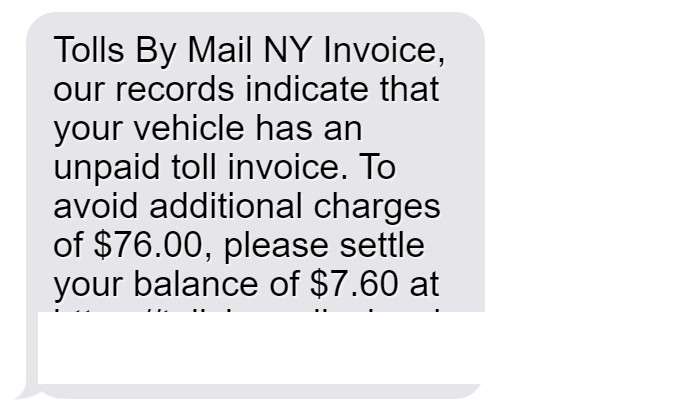
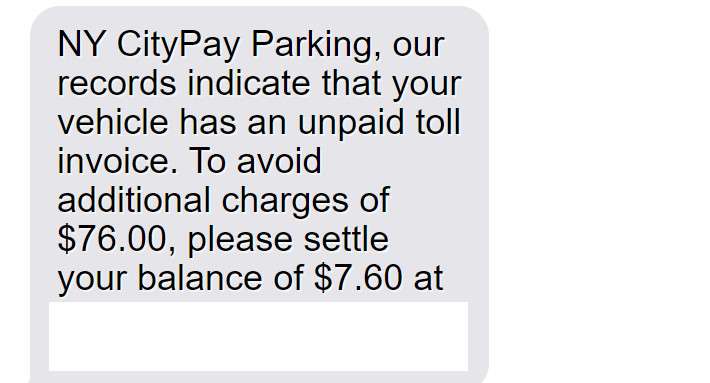
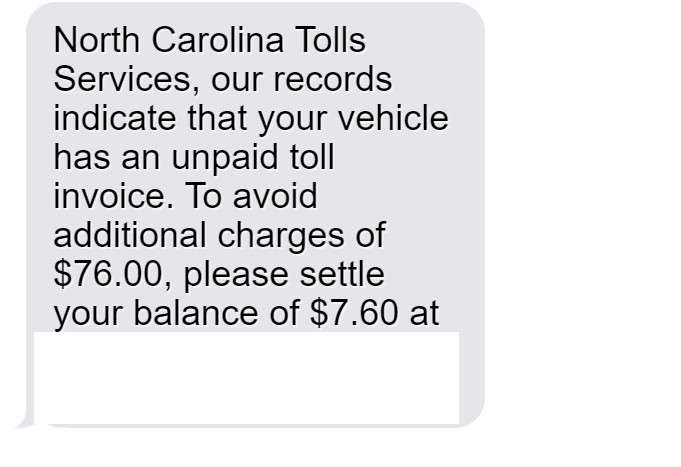
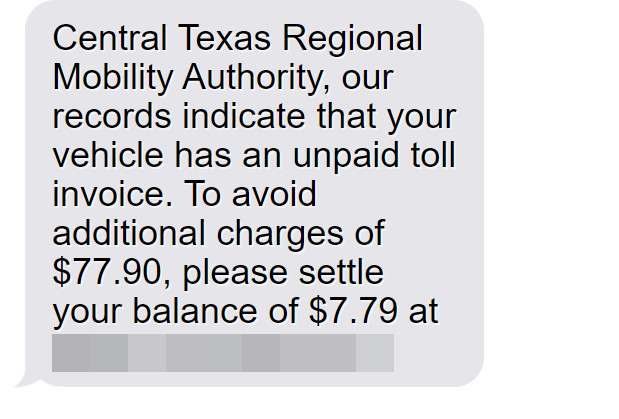
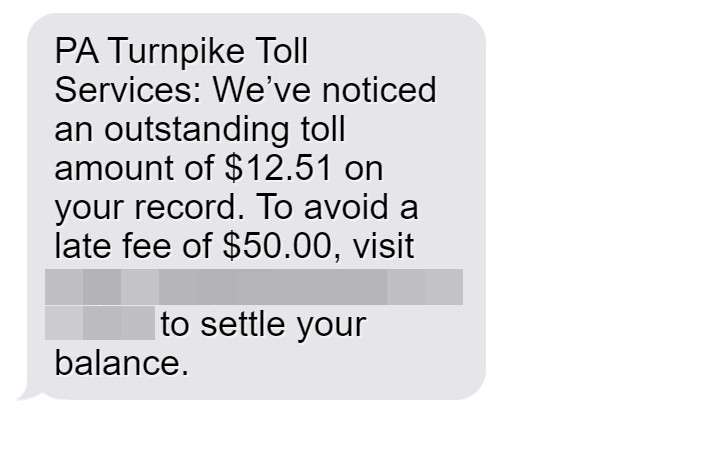
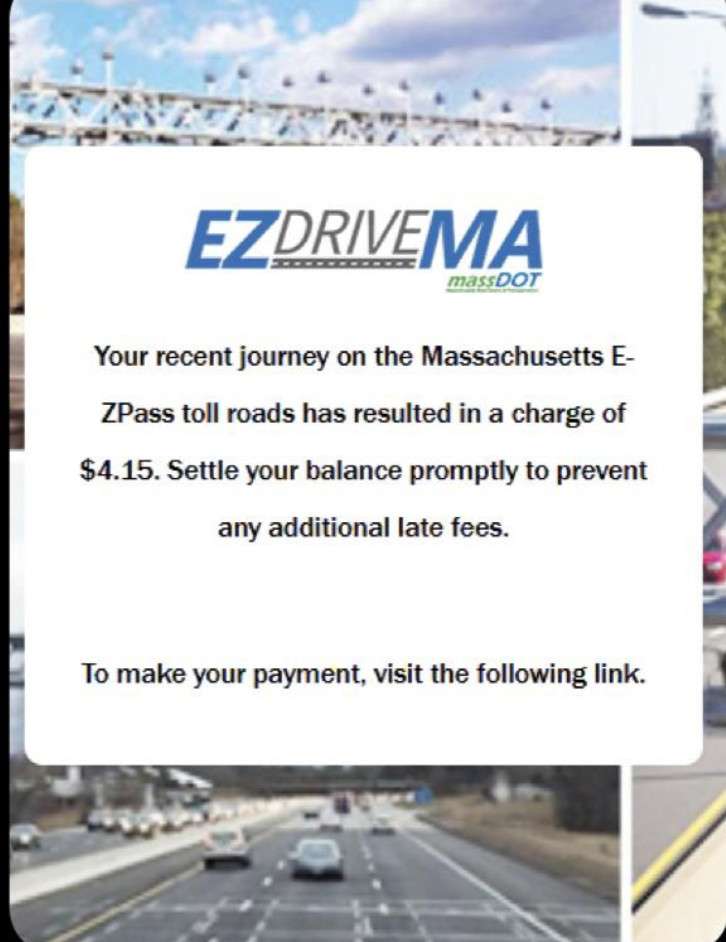
Scam Overview: What Is the Unpaid Toll Text Scam?
The Unpaid Toll Text Scam is a sophisticated phishing campaign that uses deceptive text messages to impersonate legitimate toll collection services. Victims are lured into clicking malicious links under the false pretense of settling a minor toll fee. This scam is not only about stealing a few dollars—it’s designed to compromise your most sensitive personal and financial information.
The messages typically come from unfamiliar phone numbers and mimic the tone and branding of well-known toll agencies such as:
- E-ZPass
- Ohio Turnpike
- Illinois Tollway
- Peach Pass
- GeauxPass
- Drive KS
- RiverLink
- EZDriveMA
- VDOT
Each message usually includes:
- A warning about an unpaid toll balance
- A deadline for payment to avoid late fees or legal consequences
- A fake payment link disguised to look official
- Instructions to respond or re-open the message to activate the link
What Happens When You Click the Link?
Once you click the link, you’re redirected to a fake website that closely resembles the legitimate toll agency’s portal. The fraudulent site prompts you to enter payment details and personal information under the guise of clearing your account. Scammers then use this data to commit identity theft, make unauthorized purchases, or sell your information on the dark web.
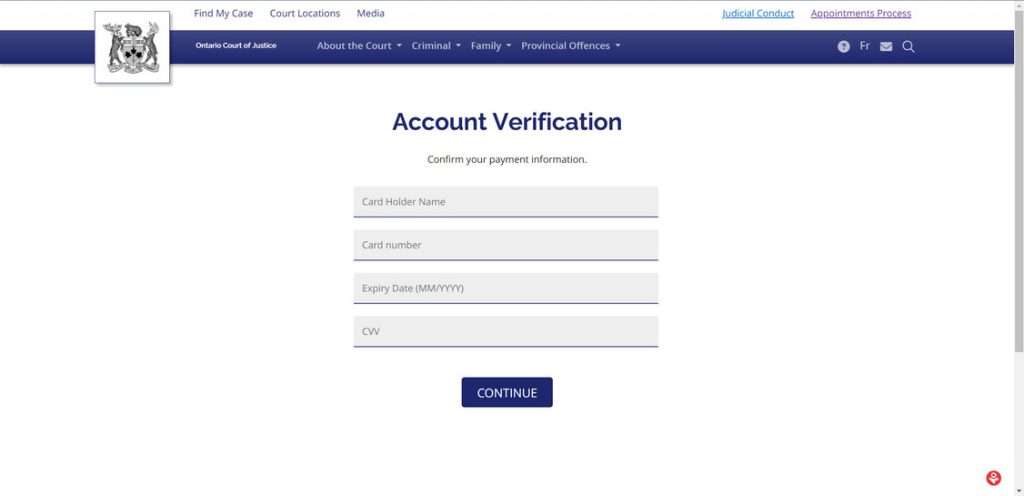
Information Commonly Stolen Includes:
- Full name
- Email address
- Phone number
- Home address
- Credit or debit card information (including CVV)
- Sometimes Social Security numbers
Why This Scam Is So Effective
Several psychological and technical factors contribute to the scam’s success:
- Familiarity: Most people who drive have used toll systems at some point, making these messages believable.
- Urgency and Threats: The texts often mention penalties, legal actions, or increased fees, pushing recipients to act without questioning.
- Authority Impersonation: The appearance of legitimacy from an official-sounding source discourages skepticism.
- Minimal Cost: Asking for a small payment (often $5–$10) disarms people’s financial caution while still harvesting valuable data.
Scale of the Scam
This is not a small-time operation. According to the Federal Trade Commission (FTC), text message scams—including unpaid toll fraud—have skyrocketed, costing victims millions of dollars annually. These scams are part of larger, coordinated cybercrime networks that shift tactics and targets frequently, making them harder to track and prosecute.
The increasing volume of these messages has prompted toll agencies and cybersecurity experts to release public alerts urging users not to click suspicious links and to verify any toll notices directly on the agency’s official website.
The Unpaid Toll Scam may appear minor, but it’s a gateway to major financial and personal damage. In the next section, we’ll break down the exact mechanics of how it works, step by step.
How The Unpaid Toll Text Scam Works
This scam doesn’t happen randomly. It’s structured, strategic, and disturbingly effective. Here’s exactly how it unfolds:
Step 1: The Initial Scam Text
The scam starts with a fake unpaid toll notice delivered via SMS. Here are some real examples:
- “E-ZPass Final Reminder: Your toll account balance is outstanding. Failure to pay by March 6, 2025, may result in legal action. Now Payment: [phishing link]”
- “Drive KS Final Reminder: You have an outstanding toll. If you fail to pay by March 10, 2025, you will face penalties. Now Payment: [phishing link]”
- “Peach Pass Final Reminder: If not paid soon, legal penalties may apply. Click here to settle: [phishing link]”
Scammers often use web addresses that look official, such as:
https://e-zpass.com-etcts.xin/ushttps://driveks.com-ticketsuc.xin/ushttps://mypeachpass.com-ticketeiv.xin/us
These URLs are intentionally designed to mimic legitimate websites.

Step 2: Fake Interaction Instructions
To “activate” the payment portal, the message might say:
“Reply ‘Y’, then exit the SMS and reopen it, or copy the link to Safari.”
This adds a layer of credibility and makes it seem like a real secure process, but it’s just a ruse to ensure victims access the malicious link.
Step 3: Redirection to a Phishing Site
The link sends you to a page that closely mimics the branding of legitimate toll operators. You may see logos, payment icons, and text styled to look like an actual invoice or toll portal. Most phishing pages contain:
- Toll operator branding (faked)
- Small invoice amount ($5–$10)
- Payment form asking for:
- Name
- Address
- Credit/debit card information
- Sometimes, additional verification data
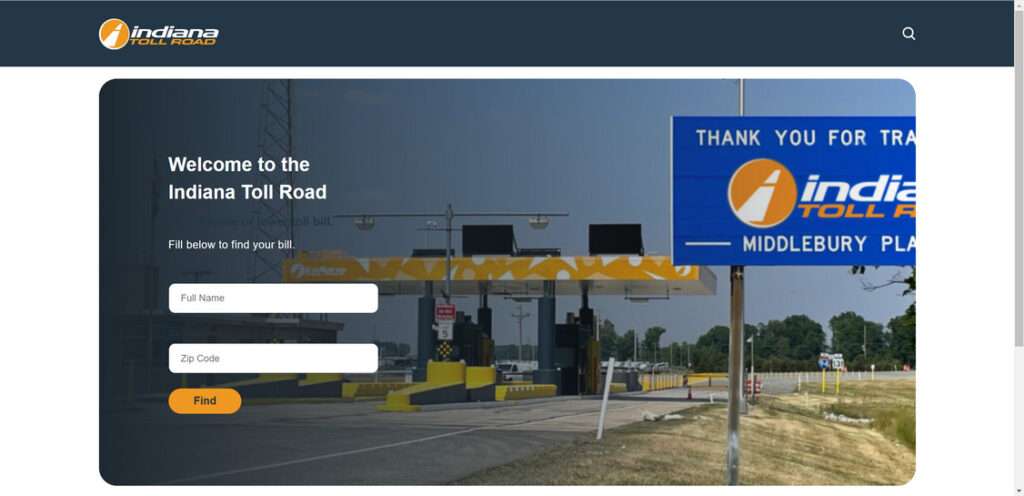
Step 4: Information Harvesting
Once entered, your data is either:
- Instantly sold on the dark web for identity theft schemes
- Used by scammers to:
- Make unauthorized purchases
- Open fraudulent accounts
- File false tax returns
- Commit bank or loan fraud
Victims may not notice the damage right away because the initial payment amount is so small. But weeks or months later, larger fraudulent charges may appear—or even IRS or credit issues.
Step 5: Disappearing Act
The phishing websites used in these scams don’t stay up for long. They’re often:
- Hosted on obscure, overseas servers
- Operated temporarily (24–48 hours)
- Abandoned quickly to avoid detection or takedown
This makes law enforcement tracking difficult, and victims may have no place to report once they realize what happened.
How To Spot a Scam Toll Text Message
Identifying a scam toll text before clicking can save you from significant stress and financial loss. Here’s how to recognize these deceptive messages:
1. Strange or Unfamiliar Links
Legitimate toll agencies use clear, official URLs. Scam texts often include:
- Misspelled or slightly altered domains (e.g.,
e-zpass.com-etcts.xin) - Unusual endings like
.xin,.usfrom unknown domains - URL shorteners or redirects
2. Urgent or Threatening Language
Scammers use urgency to pressure you. Watch for phrases like:
- “Final Reminder”
- “Your account is past due”
- “Legal action will be taken”
- “Pay within 12 hours”
Legitimate agencies don’t threaten with legal action via text.
3. Requests to “Reply Y” or Activate Links
Messages that instruct you to reply, reopen the text, or follow activation steps are common tactics to bypass spam filters and increase click rates.
4. Suspicious Sender Numbers
Be wary of:
- Messages from random 10-digit phone numbers
- Numbers without clear identification
- Texts with no return contact information
5. Unexpected Contact
If you haven’t driven on a toll road or have a valid account in good standing, receiving a toll notice out of the blue is suspicious. Always verify through official means.
6. Poor Grammar or Spacing Issues
While some scam texts are well-crafted, many contain:
- Awkward phrasing
- Spelling mistakes
- Missing punctuation or excessive capitalization
These can indicate the message wasn’t created by a professional agency.
7. Unsolicited Attachments or Forms
Toll agencies never ask you to fill out a form through a text message. If the text includes a form or downloadable link, do not open it.
How to Verify a Toll Notice Safely
- Do not click any links in the message.
- Do not respond to the text.
- Visit the toll agency’s official website directly by typing the address into your browser.
- Call customer service using the number listed on your toll statement or the official website.
Staying alert and skeptical of unsolicited text messages is your first line of defense against phishing scams.
What To Do If You’ve Fallen Victim to the Unpaid Toll Scam
If you’ve clicked the link or entered any personal data, take action immediately. Time is critical.
1. Contact Your Bank or Card Issuer
- Report the fraudulent charge
- Request a chargeback or card cancellation
- Monitor all transactions closely
Many banks offer real-time fraud protection. If you act quickly, you may be able to block the charge before it processes.
2. Freeze Your Credit
Place a fraud alert or credit freeze with the three major credit bureaus:
- Equifax: www.equifax.com
- Experian: www.experian.com
- TransUnion: www.transunion.com
This prevents anyone from opening new credit lines under your name.
3. Report the Scam to Authorities
Even if the scam site is offline, reporting helps prevent future fraud:
- FTC Complaint Assistant: reportfraud.ftc.gov
- Internet Crime Complaint Center (IC3): www.ic3.gov
- Your state attorney general’s office
Also forward the scam text to 7726 (SPAM)—a reporting number used by most major U.S. carriers.
4. Run Antivirus and Malware Scans
If you opened the link on your phone or computer:
- Run a security scan using a reputable antivirus app
- Clear browsing history and cookies
- Avoid using public Wi-Fi for sensitive tasks until your device is clean
5. Change Your Passwords
Update all passwords, especially those linked to:
- Banking apps
- Toll agency accounts
- Government services (e.g., IRS, Social Security)
- Email accounts
Use a password manager to create strong, unique logins.
6. Monitor Your Identity
Consider subscribing to identity monitoring services such as:
- LifeLock
- IdentityForce
- Credit Karma (offers limited free monitoring)
- Experian’s IdentityWorks
These services alert you if your data appears in suspicious places.
7. Alert the Toll Agency
Visit the official toll service website to:
- Report the scam
- Check for actual unpaid tolls
- Confirm your account status
Never use the link in the scam text. Instead, Google the toll service manually (e.g., “E-ZPass official site”).
Frequently Asked Questions (FAQ) About the Unpaid Toll Text Scam
1. What is the unpaid toll text scam?
The unpaid toll text scam is a phishing scheme where scammers send fake SMS messages claiming you owe a small toll fee. These messages impersonate real toll agencies like E-ZPass, Peach Pass, or RiverLink and urge you to click a link to “pay now” and avoid late fees. The link leads to a fraudulent website designed to steal your personal and financial information.
2. How do I know if a toll text is a scam?
Here are red flags that indicate a scam:
- The message contains grammar or formatting errors.
- You’re asked to “reply Y” or “activate the link.”
- The payment link includes strange domains (e.g.,
.xin,.shop, .xyz, .co, or.com-etcts). - You don’t recognize any recent toll activity.
- The message creates panic with urgent threats of legal action.
Always verify with the official website of your toll service before responding.
3. Which toll agencies are commonly impersonated in this scam?
Scammers frequently impersonate:
- E-ZPass
- Ohio Turnpike
- Illinois Tollway
- Peach Pass
- GeauxPass
- Drive KS
- RiverLink
- EZDriveMA
- VDOT
They use legitimate-sounding names to make the scam appear authentic.
4. What happens if I click the link?
If you click the link, you may be:
- Directed to a phishing site that looks like a real toll agency
- Prompted to enter personal data, including credit card info
- Exposed to malware or spyware
- Vulnerable to identity theft or financial fraud
Clicking the link alone may not always cause harm, but entering your information does.
5. I entered my credit card info—what should I do now?
Immediately take these steps:
- Contact your bank or credit card provider to cancel the card.
- Monitor your account for suspicious activity.
- Place a credit freeze or fraud alert with Equifax, Experian, and TransUnion.
- Report the scam at reportfraud.ftc.gov.
Quick action can minimize damage.
6. Can toll agencies send legitimate text messages?
Some toll agencies may send legitimate messages, but they never include threats, strange links, or urgent payment demands via text. If you receive a message:
- Don’t click links
- Don’t reply
- Visit the official toll agency’s site directly to check your account
7. Is this scam being investigated by authorities?
Yes. The Federal Trade Commission (FTC), state attorney generals, and cybersecurity groups are actively tracking these phishing campaigns. However, due to their rapid and anonymous nature, shutting down these operations takes time.
8. Can I report a scam text message?
Absolutely. Here’s how:
- Forward the text to 7726 (SPAM) to report it to your carrier.
- File a complaint at reportfraud.ftc.gov
- Report phishing attempts to www.ic3.gov
- Notify your state attorney general’s consumer protection division
Your report could help protect others from falling victim.
9. Why do scammers only ask for $5–$10
Asking for a small amount reduces suspicion. Victims may think it’s just a minor fee and pay quickly without verifying. But during that payment, you unknowingly hand over sensitive data like:
- Credit card numbers
- Billing address
- Phone number
This data is far more valuable than the small amount you paid.
10. How can I protect myself from future toll scams?
- Block and report suspicious senders.
- Don’t click on unknown links in texts.
- Use a credit monitoring service to watch for unusual activity.
- Always go to the official toll agency website to verify notices.
- Educate family members and friends, especially those who may be more vulnerable.
The Bottom Line
Scam texts pretending to be unpaid toll notices are surging across the U.S., targeting anyone with a phone and a vehicle. These phishing attempts may seem harmless, especially since they request only a small payment, but they are carefully designed to steal sensitive personal and financial information.
Knowing how the scam works, recognizing the red flags, and acting fast if you’ve been compromised can protect you—and possibly many others—from significant harm.
Stay skeptical, stay secure, and always verify before you click.










